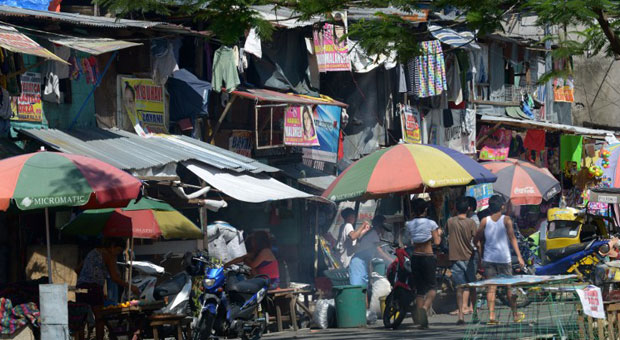Poverty to linger despite robust growth
Despite the faster economic growth enjoyed during the past few years, the poverty rate in the Philippines will still be high as the gap between the poor and the rich widens, according to the Economist Intelligence Unit (EIU).
By 2019, “the Philippines will remain one of Southeast Asia’s poorest economies, with a lower level of GDP (gross domestic product) per head than the majority of the region’s other major economies,” the EIU said in a special report titled “An Outlook for Key Emerging Asian Markets” released this month, which also tacked economic developments in China, India and Indonesia.
Based on 2014 EIU data, the country remained a “small market” despite a medium-sized population of about 100 million as the GDP per head or the value of the economy divided by the population stood at only $2,843 at market exchange rates and $6,914 at purchasing power parity (PPP) rates.
The EIU projected the GDP per head in the Philippines to rise to $3,122 (market exchange rates) or $7,320 (PPP rates) in 2015.
The EIU said it expected the Philippine economy to grow by 6.3 percent this year, “led by strong growth in private consumption.” The government’s GDP growth target is at a higher range of 7-8 percent, although economic managers had conceded that hitting even the lower end of the goal would be a “big challenge” due to weak exports caused by a slower global economy.
Still, the Philippines’ average annual growth rate of 6.3 percent from 2010 to 2014 was the highest five-year average during the past 40 years.
If the country posts a GDP growth of at least 7 percent this year, the six-year average would be the fastest since the 1950s, the government had said.
“GDP per head will continue to rise in 2015 [to] 2019, reaching $4,549 at market exchange rates by the end of the forecast period,” the EIU said, as the Philippine economy was seen expanding to be worth $493.2 billion.
In contrast, EIU data showed that Asean neighbor Indonesia, even with a bigger projected population of 265.3 million in 2019, would still have a higher GDP per head of $5,515 given expectations that it would have a $1.46-trillion economy—or almost three time larger than that of the Philippines—four years from now.
Despite the robust growth and rising average income per capita, poor Filipinos would be left behind and they would not feel the gains from a fast-expanding economy, according to the EIU.
“The Philippine economy will also remain marked by wide inequalities of income, and the disparity between the richest and poorest households will stay particularly acute. Consequently, large numbers of Filipinos will continue to live in poverty,” the report read.
“Amid sustained strong GDP growth from 2012, the rural poor will benefit only to the extent that the government directs its spending toward improving the quality of essential services such as education, healthcare and transport. Government transfers, notably in the form of the conditional cash-transfer program, which requires parents to send their children to school and have regular health checks in exchange for cash handouts, have facilitated growth in the private consumption of lower-income brackets in recent years,” the EIU noted.
The report nonetheless sees a growing middle class that would further bolster consumer spending.
“Among the more affluent middle class, a number of trends may influence domestic demand and cause it to strengthen. The liberalization of sectors such as retail and telecommunications should lower prices, improve quality and widen choice. Strong inflows of remittances from Filipinos working abroad, relatively low interest rates and stronger job growth have buoyed consumer expenditure,” it said.
“Furthermore, banks are moving away from their traditional areas of activity toward an increasing emphasis on retail financial products such as loans for housing and cars, and debit and credit cards; this trend will extend consumer opportunities. Growth in credit-card use, in particular, has accelerated strongly in recent years,” it added.
“Although poverty will remain a problem, continuing healthy rates of economic expansion in 2015 to 2019 will also benefit the poorer segments of the population,” the EIU said.
